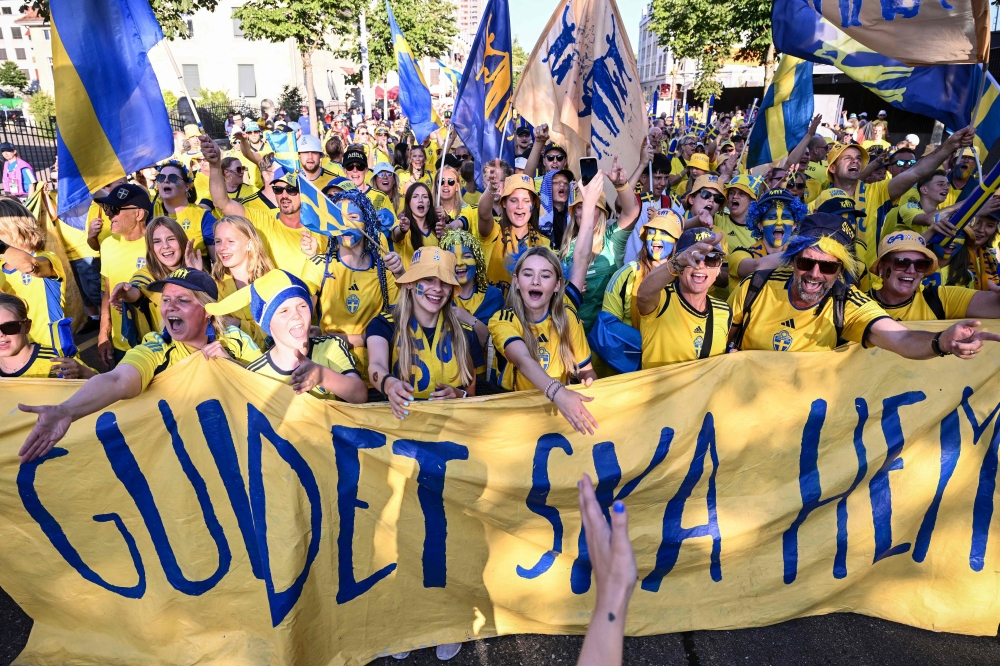Why Amanda Anisimova’s emotional post-match interview was a masterclass in handling failure

Editor’s note: This story is a part of Peak, The Athletic’s desk covering leadership, personal development and success through the lens of sports. Follow Peak here.On Saturday at Wimbledon, it took 57 minutes for Amanda Anisimova to lose the women’s final, a painful 6-0, 6-0 drubbing at the hands of Iga Świątek. It took her just more than five minutes — and a few tears — to reframe her failure into something totally different.AdvertisementThe video of Anisimova’s post-match remarks was soon one of the indelible moments from Wimbledon, a moment of humanity after a brutal loss. Needing just one question, Anisimova, a 23-year-old American, fought back tears, graciously complimented her opponent, thanked the fans — and apologized, too — and then broke down as she praised her mother, who had nurtured and supported her after the sudden death of her father in 2019 and during an eight-month sabbatical from tennis that began in 2023.“I know I didn’t have enough today, but I’m going to keep putting in the work,” Anisimova said, wiping tears from her cheek. “I always believe in myself so I hope to be back here again one day.”It was easy to see why the moment went viral. To tennis fans, it was a heart-wrenching display, the cruelties of the sport laid bare. To Amy Edmondson, a professor of leadership and management at Harvard Business School, it was something more: a masterclass in failure.That might sound harsh. It’s not supposed to be.Edmondson is an academic with a particular interest in human failures. Namely, she has a strong belief that we all could benefit from failing a lot more. So when she watched Anisimova’s speech, she saw an example of an argument she presented in her 2023 book, “Right Kind of Wrong: The Science of Failing Well.”“It was courageous,” Edmondson said. “It was honest, and then you realize how compelling it is and how few people truly take that opportunity to be honest and vulnerable and generous after a devastating failure.”Edmondson’s argument stems from a simple belief: The best companies fail more, not less. “The most successful or high-performance organizations are not the ones that never fail,” she says. “They’re the ones that catch and correct. And they’re willing to take risks in new territory in ways that often lead to success — but often don’t.”AdvertisementEdmondson believes most human failure can be separated into three archetypes. There is basic failure, which often amounts to simple error. You send an email to the wrong person at work, or type the wrong number in an expense report. There is also complex failure, when more complicated systems, like supply chains during a pandemic, fail due to multiple causes. Both types — basic and complex — can be corrected.It’s the third type of failure, which Edmondson labels “intelligent failure,” that is most beneficial, leading to knowledge, discovery and growth. To qualify, Edmondson offers four criteria: You are operating in new territory, pursuing a goal, testing a hypothesis, and you have thoughtfully considered the risks.“When a scientist has a good hypothesis and she tests it and it’s wrong, that’s not bad,” Edmondson says. “It’s one step closer to a game-changing discovery.”The most innovative companies, Edmondson says, take a similar approach.Athletes tend to understand this dynamic better than most. Jannik Sinner lost to Carlos Alcaraz in a five-set epic at the French Open this year, then pointed to the value of that defeat after beating Alcaraz at Wimbledon on Sunday. “You just have to understand what you did wrong and you have to work on that,” Sinner said.Pete Sampras once called his loss to Stefan Edberg in the 1992 U.S. Open one of the most important moments of his career. After winning the first set 6-3, Sampras dropped the second set 6-4 and lost a tiebreaker in the third, at which point his head dropped and his whole demeanor changed. Edberg knew then he had him beat.“I knew deep down in my heart that I didn’t fight that hard,” Sampras later said. “I didn’t really want it enough at that time. And that’s when things changed. When I lost the match, it bothered me, it irked me. I feel like I packed it in. I promised myself I would never let that happen again. And so I look at that match as the pivotal match of my career – and it was a loss.”AdvertisementSampras went on to win 13 more majors over the next decade.For those of us who are not elite athletes, Edmondson believes the stomach for embracing failure can be weaker. Most people are better at evaluating the failures of others than our own. And whether a failure is basic, complex or intelligent, we need to respond to them with the same emotions.“We have to learn to be OK with failures in new territory,” Edmondson says.It’s not easy, but there are ways to improve. Edmondson believes people should always consider the “true rational stakes” of a situation, and then code it as such. Anisimova, for instance, lost out on money and career advancement by losing on Saturday, but it was still just a tennis match.Anisimova was never able to solve Świątek on the court. She became just the second woman ever to lose a grand slam final 6-0, 6-0, and after the match, Anisimova outlined what had gone wrong.She felt a little fatigued after besting Aryna Sabalenka in the heat two days earlier. She struggled to stay composed.“I felt frozen there with my nerves,” she said.Then she did something important and powerful: She reframed the loss as an opportunity for growth, taking solace in a quote from the author Marianne Williamson: “Pain can burn you up and destroy you, or burn you up and redeem you.”“I told myself, ‘I’ll definitely come out stronger after this,’” she said. “I mean, that’s not an easy thing to go through, losing 0-0 in a Grand Slam final. If anything, I can look at it as a positive.”(Illustration: Dan Goldfarb / The Athletic; Henry Nicholls/AFP / Getty Images)











